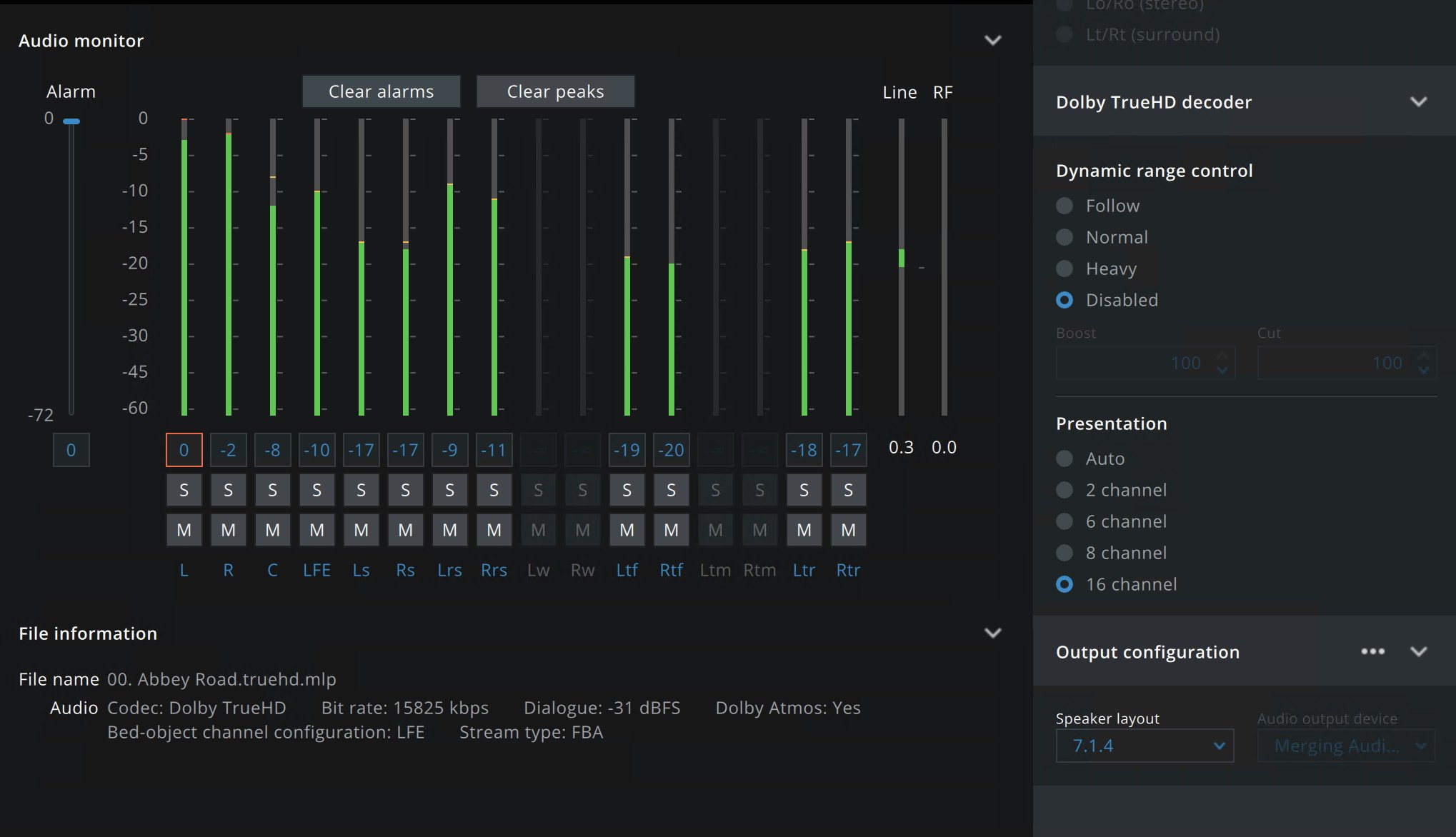I am looking to see if anyone can think if a way that I can play back media on a Windows PC where I can bitstream the TrueHD and DTS-HD audio to my AVR over HDMI while simultaneously decoding it to 8 channel PCM (like LAV Filter can do).
With MPC-BE player I can use it's dual audio out feature to bitstream the audio 2 different HDMI devices at the same time. I can also decode it to PCM for 2 different output devices at the same time as well (though this is also achievable through software like Voicemeeter as well).
But I am not able to set one output to bitstream and one to decode at the same time. I suppose due to limitations of the design of MPC-BE's dual audio out system.
I am wondering though can anyone think of a way to make get it to work? I don't see why it shouldn't be technologically possible to make work.
Like is there maybe a way I can have the second output device that I set in MPC-BE to be some sort of virtual audio device that can accept a bitstream signal, and then that software could then decode it like LAV Filters can and does?
Any ideas anyone?
What I really want to achieve is to use my regular Denon AVR for my Atmos and DTS:X bitstream for my theater, but then also get a raw copy of the LFE only channel so I can send it to some tactile system.
I have found that I like my tactile system a lot more when I can feed it a pure LFE signal (instead of the LFE signal plus all the mains crossovers from setting my speakers to "small").
I could set my speakers to "large", but they do not handle this very well and IMO sound worse this way. Also that means I lose this low end mains crossover for my actual subwoofers.
There are other reasons as well like having the tactile channel be free from room EQ and also be able to offset the tactile channel sooner than the AVR allows me to adjust it.
The only way I can think to solve this is to use 2 AVRs with HDMI split or bitstream to both with MCP-BE dual audio output, but I would really prefer not to have to get a second AVR just to use it to get a raw, clean LFE signal out.
Thanks
With MPC-BE player I can use it's dual audio out feature to bitstream the audio 2 different HDMI devices at the same time. I can also decode it to PCM for 2 different output devices at the same time as well (though this is also achievable through software like Voicemeeter as well).
But I am not able to set one output to bitstream and one to decode at the same time. I suppose due to limitations of the design of MPC-BE's dual audio out system.
I am wondering though can anyone think of a way to make get it to work? I don't see why it shouldn't be technologically possible to make work.
Like is there maybe a way I can have the second output device that I set in MPC-BE to be some sort of virtual audio device that can accept a bitstream signal, and then that software could then decode it like LAV Filters can and does?
Any ideas anyone?
What I really want to achieve is to use my regular Denon AVR for my Atmos and DTS:X bitstream for my theater, but then also get a raw copy of the LFE only channel so I can send it to some tactile system.
I have found that I like my tactile system a lot more when I can feed it a pure LFE signal (instead of the LFE signal plus all the mains crossovers from setting my speakers to "small").
I could set my speakers to "large", but they do not handle this very well and IMO sound worse this way. Also that means I lose this low end mains crossover for my actual subwoofers.
There are other reasons as well like having the tactile channel be free from room EQ and also be able to offset the tactile channel sooner than the AVR allows me to adjust it.
The only way I can think to solve this is to use 2 AVRs with HDMI split or bitstream to both with MCP-BE dual audio output, but I would really prefer not to have to get a second AVR just to use it to get a raw, clean LFE signal out.
Thanks


